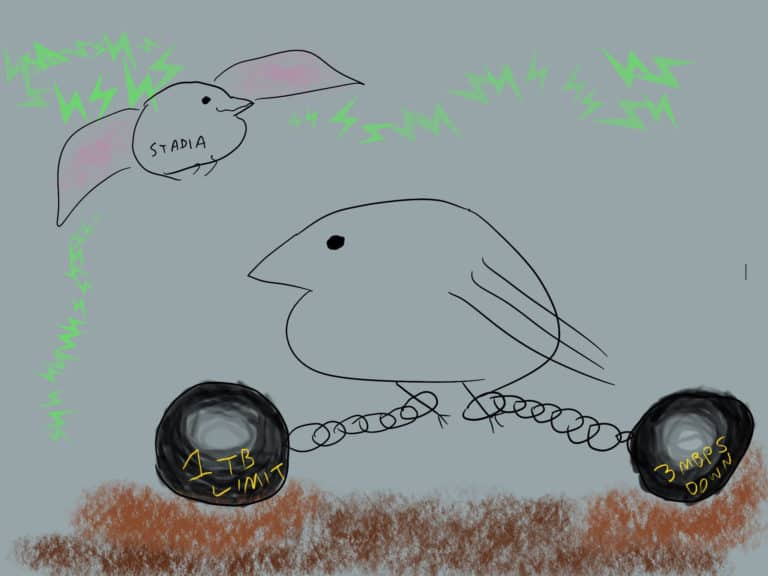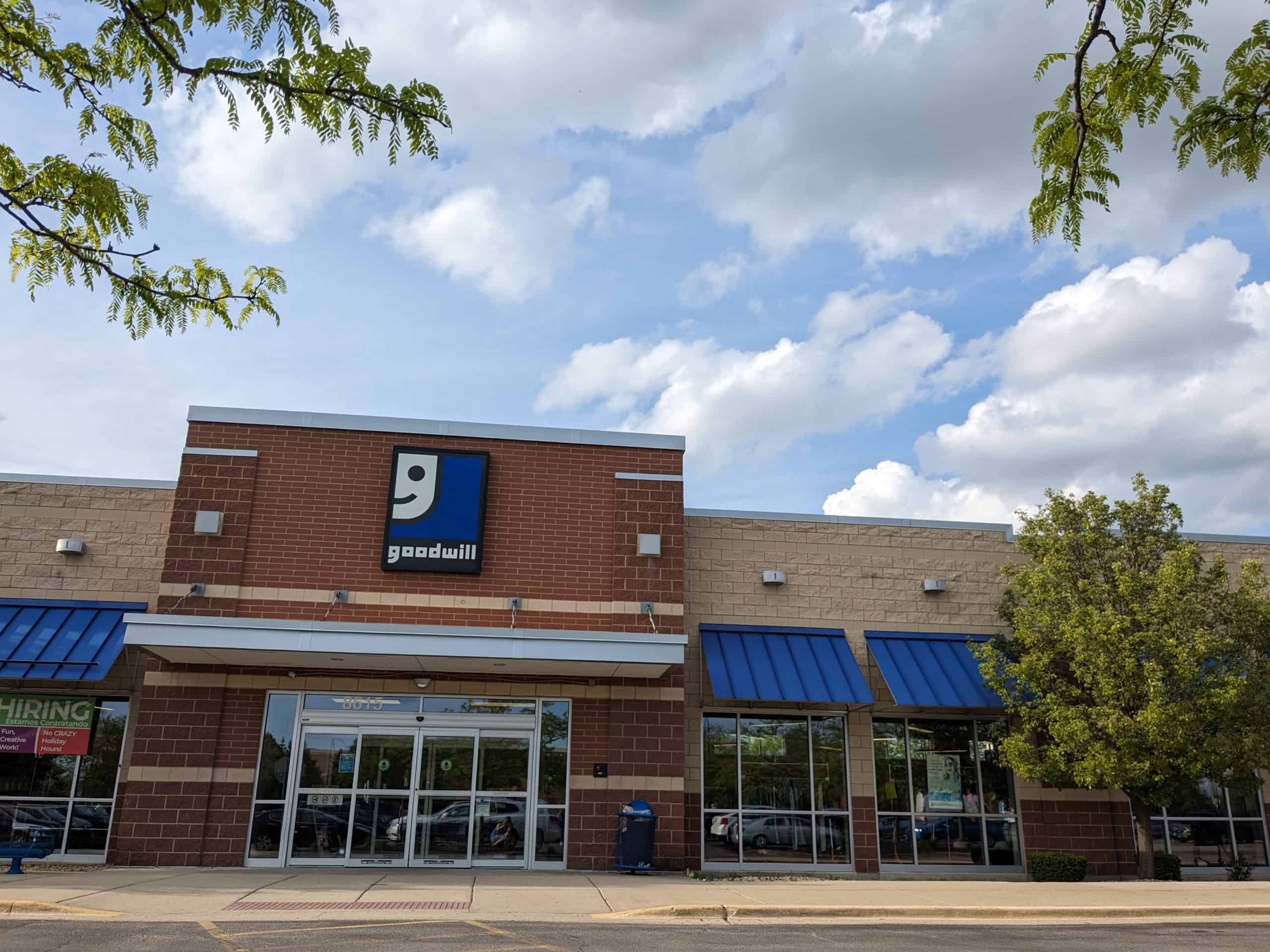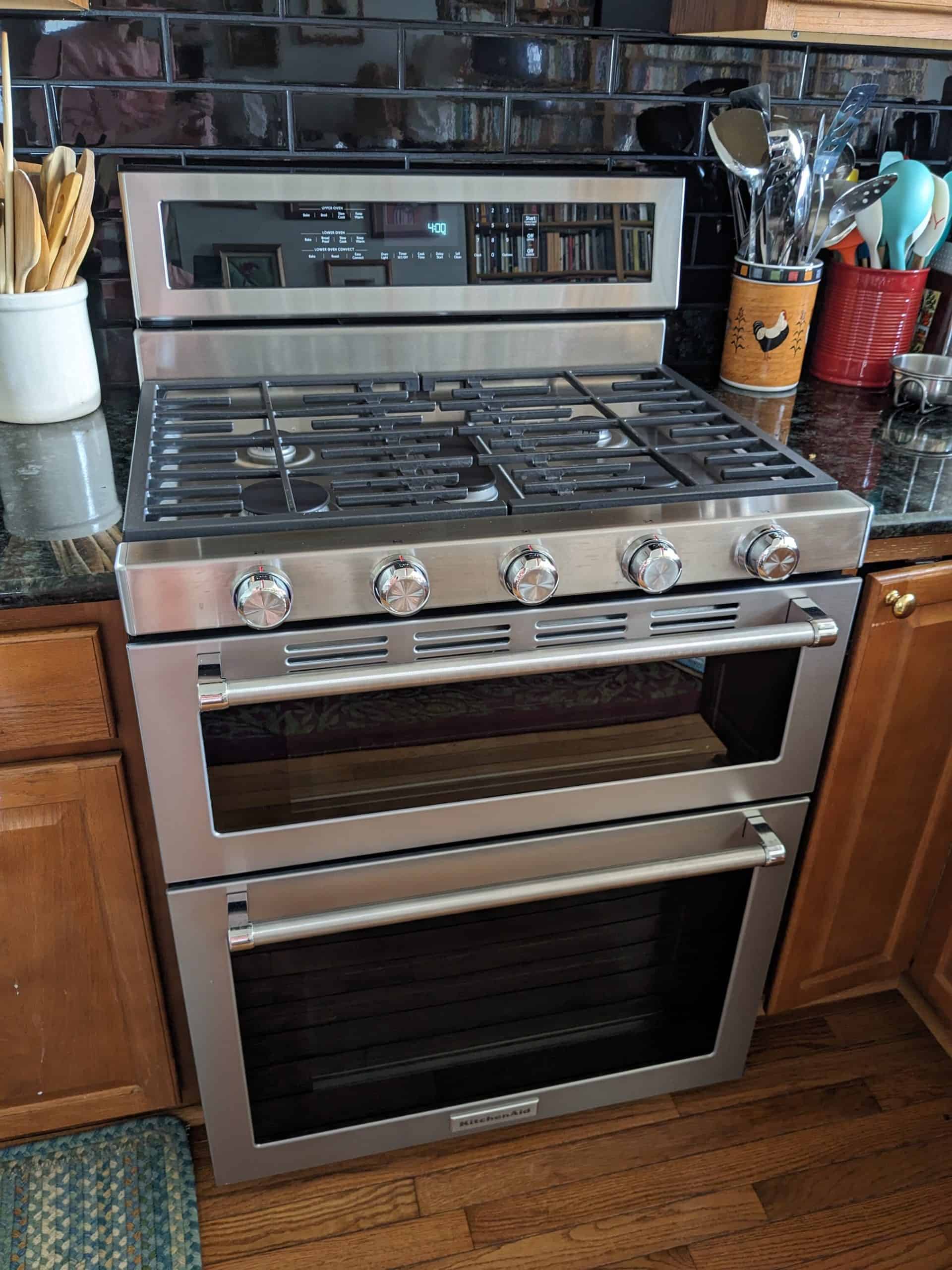This is the year 2019. We stream movies and TV shows in 4k, back up photographs to the cloud, take part in video conferences when we work from home, and live-stream video updates about our lives. Oh, and we play video games. We play them online with the help of clunky antiquated hardware—an Xbox, a Nintendo Switch, a PlayStation, a full-fledged gaming PC with a $3,000 GTX Titan Z graphics card. Oh, the idiocy! Why can’t we have a cloud gaming service with 4k resolution, 60 frames-per-second, and an integrated share feature? Why can’t we play Assassin’s Creed Odyssey in our browser with just one click? Why can’t we rejoice that Stadia is here?
I don’t like Stadia’s model. I don’t like their Chromecast-plus-controller hardware package. I have a philosophical bone to pick with the Stadia: Why promise a new horizon of gaming, only to turn around and market current-generation games, all of which were definitely developed with the current hardware limitations of game consoles in mind? Unless Playstation and Xbox don’t exist at all in some bizarre iteration of the future, games will always be developed with their limitations in mind. But every active neuron in my brain rejects Stadia for one simple reason: our accursed United States Internet. Let’s talk about Internet usage, bandwidth caps, and the future of Internet in this country before we start talking about streaming games from the cloud.
Most of us have home Internet with a 1TB cap. Both AT&T and Comcast have a 1TB cap. Most of us would rather not give Comcast the extra $50 per month (that’s $600 per year) for a no-cap plan. If you’re lucky enough to have unlimited data with Charter/Spectrum, rest assured that come 2023, you’ll probably be capped when the conditions imposed on the 2016 Time Warner Cable merger expire. Fiber is only available to 25% of the population, according to HighSpeedInternet.com. No worries, you might say, Google’s going to give us fiber, too! Google’s going to give us Stadia, and then give everybody fiber to support it. Perfect! Have a look at this Vox article, “America desperately needs fiber internet, and the tech giants won’t save us,” and its accompanying subject matter, Harvard Law School professor Susan Crawford’s new book, Fiber: The Coming Tech Revolution—And Why America Might Miss It.
Now that dreams of high-speed, no-cap Internet have died in your heart, let’s return to the 1TB cap. Introducing this subject is an Ars Technica article from January 2019, “Terabyte-using cable customers double, increasing risk of data cap fees.” Here’s the crux of the article, the first two paragraphs:
US cable Internet customers are using an average of 268.7GB per month, and 4.1 percent of households use at least 1TB, according to new research by the vendor OpenVault. Households that use at least 1TB a month are at risk of paying overage fees because of the 1TB data caps imposed by Comcast and other ISPs. Terabyte users nearly doubled year over year, as just 2.1 percent of households hit the 1TB mark last year, according to OpenVault.
Sure, you can say, only 4.1 percent of households use at least 1TB. But if you’re a medium- to hard-core gamer, sharing Internet in a household with roommates or family members, you’ve probably already had a battle royale with connected devices, automatic downloads, streaming services, and your bandwidth cap. We had to cancel PlayStation Vue because it pushed us toward the cap too quickly. (To get an idea of how easy it is for ordinary folks to exceed the 1TB cap, take a look at the comments on this ConsumerReports article, or Vox writer’s Jeff Grubb’s attempt to come in under the cap.) The trend—exponential growth, doubling usage year over year—is more important than the seemingly small, insignificant 4.1 percentage. When something doubles year over year, it grows eventually to super-colossal size. Let’s return to the Ars Technica article:
For cable Internet users, the need to limit usage to avoid overage fees isn’t a selling point. But for OpenVault’s cable industry customers, the ability to impose caps is a plus because it helps cable companies delay network upgrades. “Our analysis makes it clear that usage-based billing is among the most effective tools the industry has in managing consumption and reducing the need for massive capital expenditures,” OpenVault Executive VP Josh Barstow said in the OpenVault announcement.
The implication here is that companies will impose even stricter caps in the future if their current infrastructure can’t handle the workload. They’ll do anything to “delay network upgrades.” Improvements are lost profit. Broadband companies are monopolistic. They have no competitive incentive to improve their technology, even as they struggle to meet the demand for high-speed Internet. I live in metropolitan Chicago. Dense, developed, compact metropolitan areas are supposed to have better Internet speeds than rural areas, but I can assure you that’s not always the case. When we had AT&T, our speed using the Google’s Internet speed test clocked in at less than 3 Mbps. For purposes other than simple web browsing, our AT&T Internet didn’t work. We switched to Comcast’s “Extreme” Internet plus “Basic” TV and Xfinity Voice, whatever the hell that is. This plan advertises speeds up to 250 Mbps. We pay $110.31. During peak evening hours, our speeds are often less than 1 Mbps. Sometimes they’re as high as 8 Mbps. As I write this article, I’m getting 15.9 Mbps.
Let’s talk about what the 1TB cap and our less-than-impressive speeds have meant for our gaming, and what it would mean if we tried Stadia. You can say that the two of us are a fringe-case because we’re playing online with two different PlayStations in the same house. (See our article about gamesharing.) But if two people can’t game with Stadia on the same Internet connection, how smart of product is it? If two brothers won’t be able to group up and play co-op on Stadia at the same time, how happy with this product will they be?
For the two months we tried PlayStation Now, Sony’s very own games streaming service, we shot far past our bandwidth cap. Patch downloads were paused at this time. We were playing Borderlands 1 on splitscreen. We were only running one instance! PSNow struggled to render even 2008 graphics in a decent resolution. Despite playing in low-rez, Xfinity sent us a bandwidth warning not even halfway through the month. I shudder to think what would have happened if we were playing Borderlands 2.
On June 7 Business Insider did some preliminary hand-wringing about Stadia’s data suck in an article titled, “Google’s Stadia can stream Xbox One and PlayStation 4 games to your phone or computer, but it might kill your data plan” Their findings:
At the best possible quality, Stadia will use 35 Mbps of data per second, or about 15.75GB per hour. At Google’s recommended minimum quality, Stadia will use about 4.5GB per hour.
This is such heavy bandwidth usage that it’s making my head spin. Assuming that our spotty Comcast connection could even handle running two Stadia instances at max quality, that amounts to 30GB per hour, or about 100GB (10% of our cap) for a single 3-hour gaming session. Comcast charges $10 for every 50GB you use above 1TB. That puts the cost of Stadia at about $6 per hour if we were stupid enough to continue gaming after our Internet reached its cap.
Google proudly announced that Stadia would end the days of developers being limited by the black box under the television. That’s nonsense. Google is simply shifting the onus from the hardware to the network connection. I’m no product designer, but I’m thinking Google’s strategy for Stadia is that its users will be locked out of playing video games during peak hours (the minimum is 10 Mbps—there’s no way we’re getting that at 6:30 p.m. on any night, much less getting twice that if both of us were playing), which will reduce the users’ overall play-time enough that they won’t run face-first into their bandwidth limit.
Or Google’s customer profile is the lone college student, connecting his laptop to his speedy-and-stable, university-provided Ethernet port behind his dorm room desk and preparing to slack off when he should be studying. Children certainly won’t be gaming on Stadia—the last thing parents want is to get their cap overage charge notification from Comcast every month and run to their kids screaming and gesticulating, like they did with phone bills in the days when every text message cost 10 cents or long-distance calls cost 50 cents per minute.
Give me my hardware! Give me a new PS5! Give me the new Switch! Give me the latest Xbox! In my lifetime in the United States, hardware improvements and technology have come along far more quickly than improvements to network infrastructure and technology. Hardware development is centralized and controlled by strategic and monied corporations who have a strong incentive to advance their technology as quickly as is possible. On the other hand, networking is a problem of distributed infrastructure, which suffers from, well, its distributed nature. It’s hard enough to control what’s going on under our noses, much less what’s going on with network connectivity in Boseman, Montana or Mobile, Alabama. Remember all the excitement about submarine cables back in 2012? When the author of this Ars Technica article could write this hopeful sentence:
Serving up the necessary bandwidth will be a challenge, of course, but it’s a challenge that tech companies and research groups alike are racing to beat.
Correct me if I’m wrong, but that “race” has stopped or slowed to a crawl, at least in the United States, particularly in my filthy, decrepit neck of the woods. Cable Internet was available in Chicago by the late 90s. At the time I attended high school in Chicago in the early 00s, my Internet connection was far better than my connection today. Comcast has been signing new customers for twenty years and doing the bare minimum to keep the Internet functional. Every time I receive a direct-mail spam from Comcast advertising high-speed Internet at rock-bottom prices, I know that a few more people in my neighborhood just signed up and started streaming Netflix in 4k. My Internet will be even slower. Neither Comcast, AT&T, nor any fiber company has announced any changes or upgrades the desperate Internet situation in Chicago (though in 2017 RCN expanded coverage to Evanston, the elite, wealthy northern suburb shared with Northwestern University). Yet Stadia is putting all their money on consumers’ access to fast broadband with unlimited bandwidth.
Google is notoriously flaky with their products. Anybody who was bullied into using Google Plus has a clear idea about how Google treats unsuccessful products. (Here’s a list of 50 failed Google products.) Google Plus faced challenges because other social networks were popular, beloved, and firmly, impenetrably entrenched in consumers’ daily habits. Does that remind you of anything else? Your PlayStation, perhaps? Your XBox? People are fanatical about their chosen game systems. Nintendo has unique, innovative products with almost universal appeal, and rock-solid exclusive IPs like Mario, Zelda, and Pokemon. Sony is brutally efficient and never seems to lose at anything. The Xbox has beautiful, solid hardware and decades of experience building Xbox Live and carving out a market share despite being, well, lame and Microsoft-y. I’m not convinced that Stadia is going to be enough of an easy win for Google to continue supporting it for three, five, or ten years, which is probably what it would take to establish the legitimacy of a new game system. How much money and time is Google going to spend taking these guys on when they can retreat to the safety and sublime pleasure of raking in Adwords revenue?







